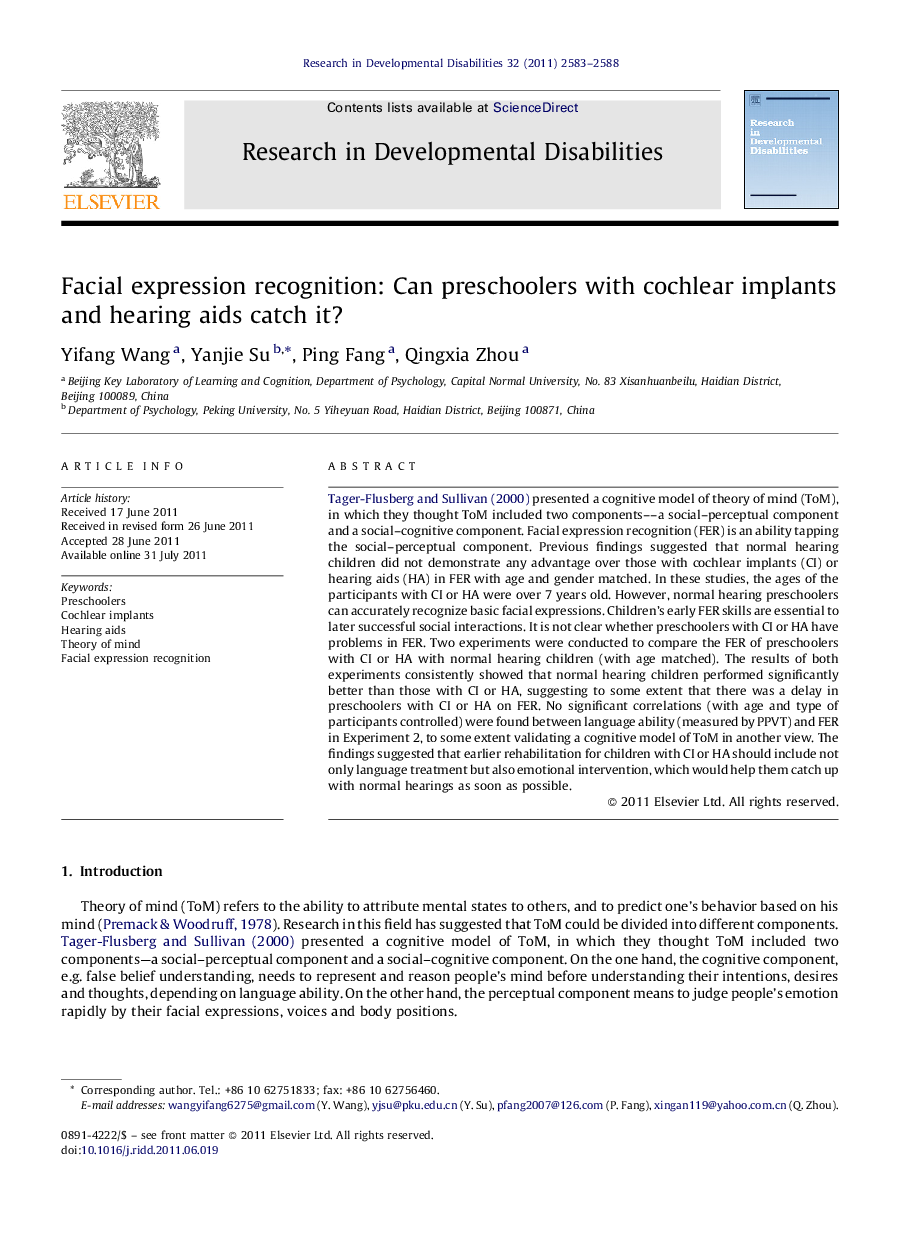| کد مقاله | کد نشریه | سال انتشار | مقاله انگلیسی | نسخه تمام متن |
|---|---|---|---|---|
| 371840 | 621941 | 2011 | 6 صفحه PDF | دانلود رایگان |

Tager-Flusberg and Sullivan (2000) presented a cognitive model of theory of mind (ToM), in which they thought ToM included two components––a social–perceptual component and a social–cognitive component. Facial expression recognition (FER) is an ability tapping the social–perceptual component. Previous findings suggested that normal hearing children did not demonstrate any advantage over those with cochlear implants (CI) or hearing aids (HA) in FER with age and gender matched. In these studies, the ages of the participants with CI or HA were over 7 years old. However, normal hearing preschoolers can accurately recognize basic facial expressions. Children's early FER skills are essential to later successful social interactions. It is not clear whether preschoolers with CI or HA have problems in FER. Two experiments were conducted to compare the FER of preschoolers with CI or HA with normal hearing children (with age matched). The results of both experiments consistently showed that normal hearing children performed significantly better than those with CI or HA, suggesting to some extent that there was a delay in preschoolers with CI or HA on FER. No significant correlations (with age and type of participants controlled) were found between language ability (measured by PPVT) and FER in Experiment 2, to some extent validating a cognitive model of ToM in another view. The findings suggested that earlier rehabilitation for children with CI or HA should include not only language treatment but also emotional intervention, which would help them catch up with normal hearings as soon as possible.
► Facial expression recognition is an ability tapping a social perceptual component of theory of mind.
► We examined facial expressions recognition of preschoolers with cochlear implants or hearing aids.
► They performed significantly worse than normal children with age matched.
► No significant correlations (with age and type of participants controlled) existed between language ability and facial expressions recognition.
Journal: Research in Developmental Disabilities - Volume 32, Issue 6, November–December 2011, Pages 2583–2588